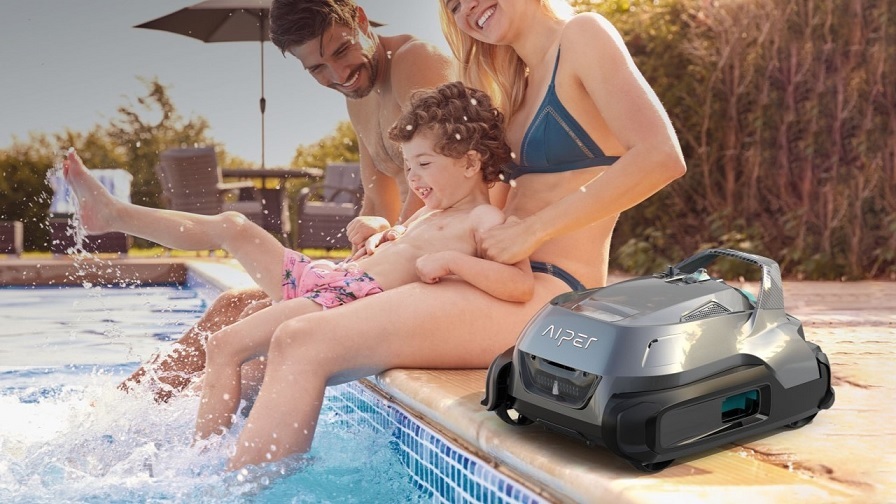Keeping a pool clean and safe for swimming is a priority for many Australian homeowners, especially given the country’s warm climate and outdoor lifestyle. However, pool cleaners can encounter problems that impact their effectiveness. Understanding common issues and knowing how to troubleshoot them can save time, money, and effort. This guide will help Australian pool owners diagnose and fix the most common pool cleaner problems.
Understanding Common Pool Cleaner Problems
A pool cleaner is designed to remove debris, dirt, and algae from your pool, but like any piece of equipment, it can experience issues. Common problems include suction loss, tangled hoses, clogged filters, and malfunctioning robotic units. In Australia, pools face unique challenges, such as fine sand from beaches or falling leaves and gum nuts from native eucalyptus trees, which can clog or damage pool cleaners. Let’s dive into some of the most frequent issues and how to address them.
Troubleshooting Suction Issues
One of the most common problems with pool cleaners, especially suction-side cleaners, is poor suction. If your pool cleaner isn’t picking up debris effectively or is floating instead of sticking to the pool floor, you’re likely dealing with a suction issue.
Step-by-Step Troubleshooting:
- Check for Blockages: Examine the hose and cleaner head for any visible blockages. Leaves, sticks, or other debris can easily obstruct suction.
- Inspect the Pump: Ensure your pool pump is operating correctly. A malfunctioning pump can drastically reduce suction power.
- Examine the Pool Filter: Dirty or clogged filters can reduce water flow, impacting suction. Clean or backwash the filter at least once a week, especially during the summer months when pool usage is higher.
Tips for Australian Pool Owners: Consider the local environment. Fine sand from nearby beaches or heavy leaf fall from native trees can quickly clog hoses and filters, so adjust your maintenance routine accordingly.
Addressing Tangled or Twisted Hoses
Tangled or twisted hoses can cause a pool cleaner to move inefficiently, reducing its cleaning coverage. This issue is particularly common in suction-side and pressure-side cleaners.
Common Causes and Solutions:
- Straighten the Hose: Lay the hose flat in the sun for an hour. The heat will help remove any twists or kinks that may have developed over time.
- Adjust Hose Length: Ensure the hose length is appropriate for your pool size. Too much slack can cause tangling, while too little can limit the cleaner’s reach.
- Use Hose Weights: Attach hose weights to keep the cleaner grounded and prevent it from floating and twisting.
Resolving Issues with Robotic Pool Cleaners
Robotic pool cleaners are a favorite among Australian pool owners due to their efficiency and low maintenance requirements. However, they are not without problems. Common issues include power supply problems, navigation errors, and mechanical failures.
Troubleshooting Steps:
- Check the Power Supply: Make sure the power supply is securely connected and the socket is functioning correctly.
- Clean the Impeller and Brushes: Built-up debris can block the impeller or reduce brush efficiency. Regularly clean these components to ensure optimal performance.
- Update or Reset Software: Some robotic cleaners come with software that needs periodic updates. If your cleaner has stopped moving or is behaving erratically, check for software updates or try resetting the device.
Clogged Filters and Blocked Cleaner Heads
If your pool cleaner has weak suction or isn’t picking up debris, it could be due to clogged filters or a blocked cleaner head.
Steps to Fix the Issue:
- Clean the Filter Basket or Bag: Empty the filter basket regularly to prevent clogging. For cartridge filters, rinse them thoroughly with a garden hose.
- Rinse or Replace the Filter Cartridge: Depending on usage and the level of debris, you may need to rinse the cartridge more frequently or replace it every few months.
- Clear Debris from the Cleaner Head: Debris like twigs and leaves can get lodged in the cleaner head. Remove any visible debris to restore functionality.
Note for Australian Pool Owners: Eucalyptus leaves and blossoms are particularly troublesome for clogging pool cleaner filters and heads. Consider installing a leaf catcher or debris trap to minimize clogging.
Maintaining Pool Cleaner Components
To avoid frequent issues, regular maintenance of your pool cleaner is essential. This involves inspecting and cleaning parts, lubricating moving components, and storing the cleaner properly when not in use.
Recommendations:
- Inspect and Clean Parts Regularly: Check brushes, wheels, and other moving parts for wear and tear. Clean them to prevent damage.
- Lubricate Moving Parts: Some cleaners require lubrication of moving components. Check the manufacturer’s guidelines.
- Protect from Harsh Sun: Australia’s harsh UV rays can damage plastic components. Store the cleaner in a shaded area or use a protective cover when not in use.
Local Highlight: Some Australian best pool cleaner brands design their equipment to withstand the country’s extreme weather conditions. Look for UV-resistant materials and sturdy construction when purchasing a cleaner.
When to Call a Professional
While many issues can be resolved with basic troubleshooting, there are times when it’s best to call a professional. This is especially true for electrical problems or major mechanical failures that require specialized knowledge and tools.
When to Seek Professional Help:
- Persistent suction problems that basic troubleshooting doesn’t solve.
- Electrical issues such as a faulty power supply in robotic cleaners.
- Structural damage to hoses or cleaner heads.
- Finding a Reliable Professional in Australia: Look for certified pool technicians in your area. Cities like Sydney, Melbourne, Brisbane, and Perth have a wide range of service providers who can help with more complex pool cleaner problems.
Conclusion
Maintaining a pool cleaner in good working order is essential for keeping your pool sparkling clean, especially in the diverse and sometimes harsh Australian climate. By understanding common problems and following these troubleshooting tips, you can extend the life of your pool cleaner and enjoy a hassle-free swimming experience all year round. Remember, proactive care and maintenance are key to preventing most issues and ensuring that your pool cleaner operates at its best.



